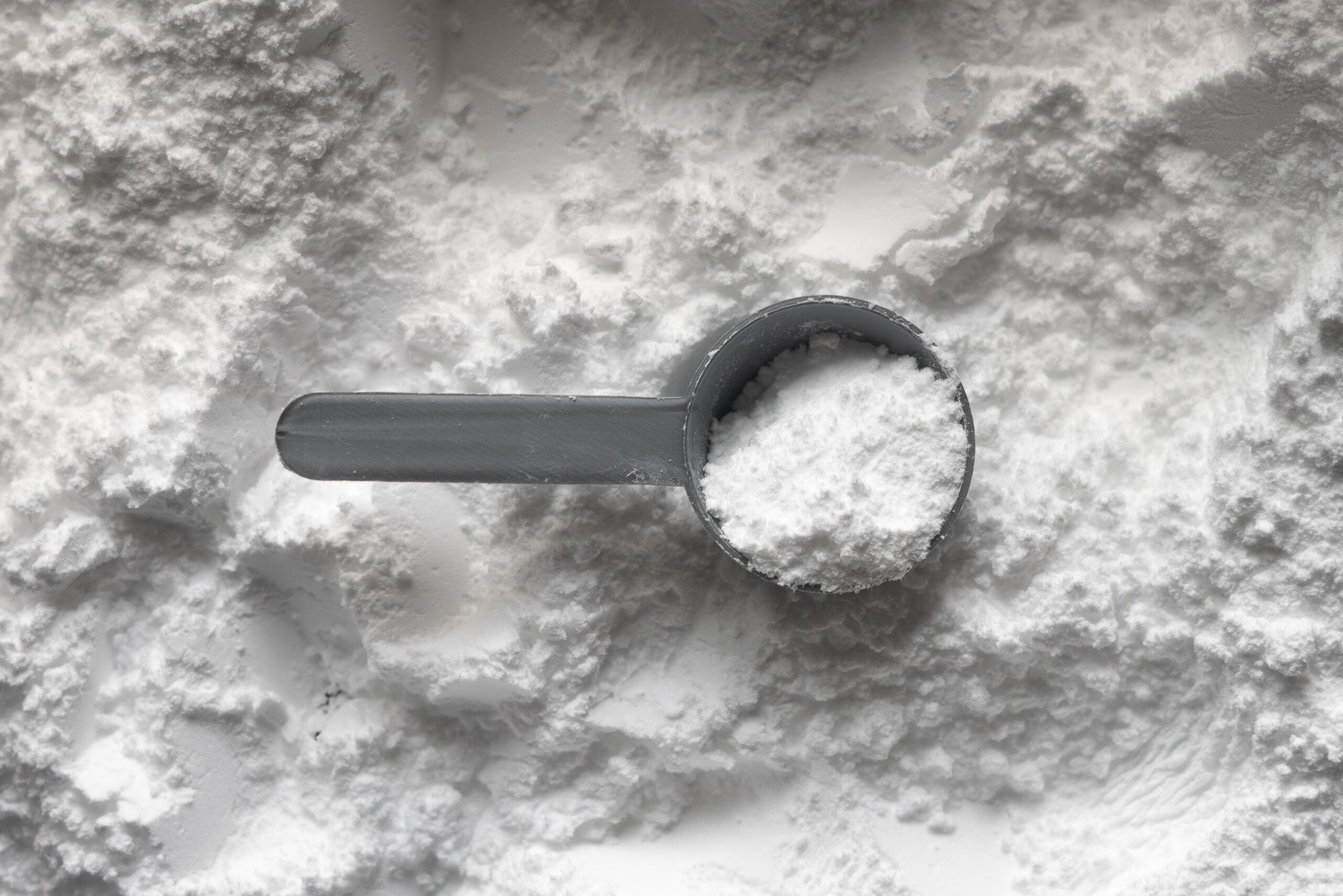Creatine Monohydrate is a widely popular supplement among athletes, bodybuilders, and fitness enthusiasts. When looking to enhance performance, increase strength and endurance, and build more muscle, creatine monohydrate is often one of the top choices. With numerous studies supporting its effectiveness, creatine monohydrate has become a staple in the fitness industry. So, let’s dive into what creatine monohydrate is, how it works, and the potential benefits and drawbacks of using this supplement.
What Is Creatine Monohydrate?
Creatine monohydrate is a naturally occurring compound found in meat and fish, and it is also produced synthetically as a dietary supplement. It is a combination of three amino acids: glycine, arginine, and methionine. Creatine is stored in the muscles and plays a critical role in producing energy during high-intensity exercise.
During exercise, the body breaks down adenosine triphosphate (ATP), a molecule that provides energy for muscle contraction. Creatine helps replenish ATP stores, allowing for longer and more intense workouts. Additionally, creatine promotes the synthesis of proteins, which are essential for muscle growth and repair.
Creatine monohydrate is the most common form of creatine and is known for its high purity and effectiveness. It is available in various forms, including powders, capsules, and liquids. Many athletes and bodybuilders take creatine monohydrate as a supplement to enhance their performance and improve their muscle mass. However, it is essential to use creatine monohydrate responsibly and follow recommended dosages to avoid potential negative side effects.
How Much Creatine Should I Take?
When it comes to taking creatine monohydrate, there is no one-size-fits-all answer. The optimal dosage can vary based on a variety of factors, including the individual’s body weight, muscle mass, and overall health.
However, a typical starting dose for creatine monohydrate is around 3-5 grams per day, taken either before or after a workout. This dosage is often referred to as a “loading phase” and is designed to saturate the muscles with creatine quickly.
After the loading phase, most individuals can then transition to a maintenance dose of 2-3 grams per day to continue reaping the benefits of creatine monohydrate supplementation.
It’s important to note that taking more than the recommended dosage of creatine monohydrate does not necessarily lead to greater benefits and may actually cause negative side effects. Therefore, it’s crucial to stick to the recommended dosage and consult with a healthcare professional before starting any new supplement regimen.
Side Effects Of Creatine
While creatine monohydrate is generally considered safe when taken in recommended dosages, there are some potential side effects to be aware of.
One of the most commonly reported side effects of creatine monohydrate supplementation is gastrointestinal distress, such as bloating, gas, and diarrhea. This is most likely to occur when individuals take high doses of creatine or do not drink enough water.
In addition to gastrointestinal issues, some individuals may experience muscle cramps or strains, especially if they do not properly hydrate or engage in strenuous exercise.
There have also been concerns about the potential long-term effects of creatine supplementation on the kidneys and liver. However, studies have not found any significant adverse effects on kidney or liver function in healthy individuals who take creatine monohydrate in recommended dosages.
How To Take Creatine
When it comes to taking creatine monohydrate, there are several key factors to keep in mind to ensure optimal absorption and effectiveness.
Firstly, it’s essential to properly hydrate when taking creatine. Creatine monohydrate draws water into the muscles, which can cause dehydration if not adequately hydrated. Drinking plenty of water throughout the day, especially before and after workouts, can help prevent this.
Secondly, it’s best to take creatine monohydrate with a meal or protein shake that contains carbohydrates. This can help enhance absorption and uptake into the muscles.
Thirdly, it’s important to follow the recommended dosages and cycling protocols for creatine monohydrate. As mentioned earlier, a typical starting dose is around 3-5 grams per day, taken either before or after a workout. After the loading phase, most individuals can then transition to a maintenance dose of 2-3 grams per day.
Lastly, it’s crucial to take breaks from creatine supplementation to allow the body to reset and prevent potential negative side effects. A common cycling protocol is to take creatine monohydrate for 8-12 weeks, followed by a 4-6 week break.
Who Should Take Creatine
Creatine monohydrate can be beneficial for a wide range of individuals, including athletes, bodybuilders, and those looking to improve their fitness and muscle mass. However, it may not be necessary or appropriate for everyone.
Athletes and bodybuilders who engage in high-intensity exercise and weight training can benefit from creatine monohydrate supplementation by increasing their power output, endurance, and muscle mass. It can also help reduce muscle damage and inflammation associated with intense exercise, leading to faster recovery times.
Additionally, older adults may also benefit from creatine monohydrate supplementation, as it can help preserve muscle mass and improve overall strength and mobility.
However, creatine monohydrate may not be necessary or appropriate for individuals who do not engage in regular high-intensity exercise or weight training. It may also not be suitable for those with pre-existing medical conditions, such as kidney or liver disease.

Final Thoughts: Creatine Monohydrate
Creatine monohydrate is a safe and effective supplement for enhancing athletic performance, improving muscle mass, and promoting overall health and wellness. It is a naturally occurring compound found in meat and fish and can also be produced synthetically.
Creatine monohydrate can be a beneficial supplement for athletes, bodybuilders, and those looking to improve their fitness and muscle mass. It’s important to use it responsibly and follow recommended guidelines to ensure safe and effective use.
To learn more, visit Train Fitness.
More Articles
Transformative Discipline: Exploring the Principles of 75 Hard
Recently, my friends and I were thinking of ways to start the new year positively, and 75 Hard will put us to the test in an effective way. Setting off on a path toward resilience and self-improvement frequently calls for more than just internal drive; it also calls...
The Best Full Body HIIT Workout You Can Do
Workouts involving full-body high-intensity interval training (HIIT) are a quick and easy approach to optimize your fitness progress. These workouts usually consist of a series of heart-pumping, intensive movements that target numerous muscle groups at once,...
Ab Workouts: Creating a Home Gym that Fits Your Lifestyle
Ab workouts are an important part of any fitness regimen because they target the core muscles that are crucial for stability, posture, and general strength. You can choose from a wide range of workouts to achieve a stronger core or a toned stomach. Engaging the...
Home Sweet Home Gym: Your Gateway to a Healthier Lifestyle
Picture this: no more rushing to the gym during peak hours, no waiting for your favorite machine, and no distractions from strangers. Instead, imagine a space where you can focus entirely on your fitness goals, set your workout schedule, and curate an environment that...
Mastering Back Exercises with Dumbbells
Dumbbell back workouts are a flexible and efficient way to improve your general strength, posture, and muscle growth. Dumbbells are a great addition to any exercise regimen, whether you're a back-health fanatic, an athlete, or just someone who enjoys working out....
The Fierce Flats
With our "Fierce Flat’s" blog, you'll be able to dive into the realm of lifting like never before. Forget about flashy kicks and high-tech soles; there's a new look in town. This blog will break down Converse and Vans' game-changing styles for all of your lifting...











